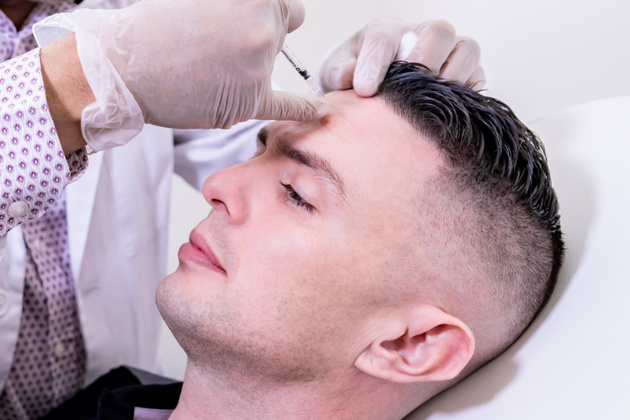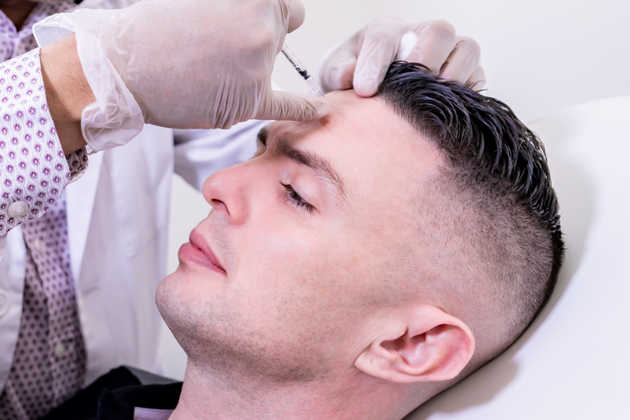Migraine Botox: What is it, how and on which points is it applied?
Migraine disease can be defined as a neurological disorder characterized by frequently recurring throbbing headache attacks along with some additional findings.

Migraine disease can be defined as a neurological disorder characterized by frequently recurring throbbing headache attacks along with some additional findings. Migraine, which greatly reduces a person’s quality of life and even causes serious workforce loss in society, is one of the extremely important health problems known to affect approximately 700 million people in the world. People diagnosed with migraine experience headache attacks at least 5 times in a 6-month period, which can last at least 4 hours or several days, and this directly affects the patient’s quality of life and general health level. Unilateral headaches, which can be moderate or very severe, are throbbing and increase with physical activity. In addition, complaints such as nausea-vomiting or noise-light sensitivity are often experienced during migraine attacks. These are important problems that prevent the patient from continuing his daily life activities. Migraine botox, one of the most up-to-date methods in the treatment of migraine disease, which greatly affects patient and public health, is one of the important options that provides extremely beneficial results even in chronic migraine cases that are resistant to medical treatment.
What is Migraine Botox?
Although Botulinum toxin injection, also called Botox, has been frequently used in plastic and aesthetic treatment areas until today, it has recently become one of the widely used treatment options in disorders related to the autonomic nervous system, muscle diseases with spasticity, and many neurological diseases that cause movement disorders. . Botulinum toxin is originally produced by Clostridium botulinum, a gram-positive anaerobic bacterium. There are a total of 7 different types of this substance, Botulinum A, B, C, D, E, F and G, which has a neurotoxin effect on nerve cells. Injection of Botulinum A and B serotypes, which are effective on pain, has been one of the preferred methods for the treatment of migraine disease in many countries since 2010.
In migraine botox treatment, the toxin appropriately injected into the patient suppresses the secretion of the chemical neurotransmitter called acetylcholine at the muscle-nerve junction, thus causing temporary loss of sensation in the muscle tissue in that area. In addition, botulinum toxin, which inhibits sensitivity in superficial muscle fibers, reduces pain signals sent from the surface to the center, thus ensuring that no pain sensation is felt in the affected muscles. In summary, botulinum injection applied in migraine and other chronic painful diseases indirectly and temporarily blocks the pain sensitivity of the central nervous system.
How is Migraine Botox Applied?
Products developed for botox application of botulinum toxin may have different dosage, effect and safety features. Therefore, the dose to be injected before administration is specifically recalculated for each patient and each product type.
Botulinum injection preparation, known as Botox in the market, contains a total of 100 units of toxin and is prepared by diluting it with 2 ml physiological saline. Muscle tissue is preferred for injection rather than subcutaneous tissue, and the appropriate syringe is determined accordingly. After the prepared solution is taken into the appropriate syringe, 5 units of toxin are injected into each point determined by the pain monitoring method. After the application, the patient is closely monitored for approximately 15 minutes and is evaluated and informed about possible side effects such as sudden headache, muscle pain and loss of strength, high blood pressure and reaction at the injection site.
Migraine Botox Points
In order to get the correct effect from botulinum injection, it is recommended to apply it to intramuscular (intramuscular) tissue rather than intradermal (under the skin) tissue. Injections into the bone membrane, eyelid and peripheral vessels may cause different complications in the patient, so application to these points should be avoided. In addition, injections, especially in the forehead, are performed bilaterally and symmetrically in order to avoid an asymmetrical appearance in the patient’s appearance.
Preferred points for migraine botox are 7: corrugator and procerus, frontalis, temporalis, occipitalis, trapezius and paraspinal muscle groups:
- Corrugator and procerus points are muscle groups located above both eyelids and between the two eyes. Since these muscles are superficial muscles, the injection applied to the area should be applied superficially and care should be taken not to damage the bone membrane.
- The frontalis muscle, on the other hand, has a larger area that starts above the corrugator muscles and covers the entire forehead area. Therefore, there are a total of 4 different injection points on the frontalis muscle.
- Another application point, the temporalis muscles, are located next to both eyes and above the ears. These muscle groups, which have an extremely important role in migraine pain, are the points where most injections are made during botox application. Before the application, the patient is asked to make the temporal muscles prominent by clenching his teeth, and then a total of 8 injections are applied to both muscles.
- The occipitalis region, located at the back of the skull, close to the nape of the neck, is another preferred injection point for migraine botox. A total of 6 injections are administered to the right and left occipital muscles.
- The cervical paraspinal muscles, located at the beginning of the neck and in the lower part of the neck, are also one of the points applied in migraine botox treatment. The application is done as superficially as possible to avoid causing weakness in the neck muscles.
- The last muscle group to which migraine botox will be applied is the trapezius muscles, and the application is completed with a total of 3 injections into this muscle.
Benefits of Migraine Botox
Botulinum A and B toxins injected into the muscle with migraine botox control the pain complaint by creating long-term and temporary loss of sensation in existing muscle cells. Migraine botox, which reduces the number of attacks, weakens the sense of pain and eliminates additional complaints such as nausea, vomiting and sensitivity to light, is an extremely useful treatment method that improves the quality of life of patients, especially in migraine patients who do not respond to medical treatment.
Botox treatment, which is applied by experienced physicians in a well-equipped clinical environment, is carried out in a short period of time, approximately 10 minutes, and the first effects begin to be seen on the 10th day after the application. Although it varies depending on the botox preparation preferred for injection, the effect of a single botox application generally lasts for approximately 12 weeks.
Frequently Asked Questions About Migraine Botox
How many sessions does migraine botox take to work?
The first effect of pain control after migraine botox is seen approximately on the 10th day. There are no migraine attacks in the following 12 weeks, but the effectiveness of the injected toxin decreases by the 13th week after the application. During this period, the patient is at risk of a possible migraine attack. Therefore, for effective treatment with migraine botox, it is recommended to apply 3 or 4 sessions in the first year. The subsequent process is planned according to the patient’s needs and usually a single botox is effective for 6 months or longer.
What are the possible side effects?
Migraine botox, applied by experienced physicians, generally does not cause serious complications. Common side effects that occur after the injection can be listed as allergic reaction in the application area, temporary hypertension in some patients, muscle weakness and stiffness, sudden headache and complaints of muscle pain reflected in the back. All of these are mild complaints that resolve spontaneously after the injection.
How many hours does migraine botox application take?
Although the injection part of the treatment takes approximately 15 minutes, it is possible to say that a single session takes approximately 1 hour, considering the examination of the patient before the application and the close follow-up after the application.



